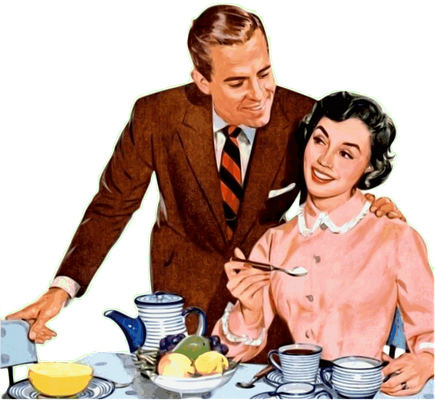4.3.4
Mina Harker
Mina Harker
Mina Harker
The dutiful fiancee of Jonathan Harker and childhood friend to Lucy Westenra, Mina’s contamination by Dracula acts as the catalyst for the band of heroes to drive him back across Europe and destroy him.


Mina's role?
Mina's role?
- Mina’s role in the novel is a complex one and it is difficult to discern how Stoker himself wanted her to be perceived.
- Critic Steve Roberts notes how in the 1901 edition to Dracula, she was introduced by her creator as “a woman of character” although was referred to as “Harker’s wife” rather than afforded her own name.
- Such is the dichotomy (difference between two opposite ideas) present in the novel regarding ‘new women’ that Mina seems to represent.


Female independence in Dracula
Female independence in Dracula
- Victorian society was very much patriarchal, despite the rise of proto-feminism.
- Women who aspired to a life beyond simple domesticity were often derided.
- In trying to lure Mina (“Come, sister. Come to us. Come! Come!”) to choose the socially-uninhibited vampire-form, female independence is represented as dangerous.
- But Mina is ultimately rewarded at the end when the vampire-curse is lifted.


Mina's intelligence
Mina's intelligence
- Some critics believe the reason for Mina's restoration and not Lucy's lies in the difference between the two women.
- Whilst both are portrayed as beautiful, Mina has other attributes - notably her intelligence (conventionally seen as a ‘male’ attribute, especially in the 19th century; Van Helsing even describes her as possessing “a man’s brain”) and her compassion for others.
- On discovering Lucy is missing from her bed, Mina’s first thought is to find her - not just for her physical safety, but also for her reputation.
Mina Harker (Cont.)
Mina Harker (Cont.)
The dutiful fiancee of Jonathan Harker and childhood friend to Lucy Westenra, Mina’s contamination by Dracula acts as the catalyst for the band of heroes to drive him back across Europe and destroy him.


Male-female inequality
Male-female inequality
- Both Mina and her husband are subject to the sexual predation of the vampire.
- The ensuing ‘punishments’ for their ‘transgressions’ also highlight the inequality between men and women in the 19th century.
- Jonathan’s orgiastic encounter with three women evokes a highly taboo subject for the Victorian era, which celebrated restraint. Away from England on business, Jonathan is clearly aroused by the appearance and actions of the female-vampires - an act of infidelity as he is pledged to Mina.


Double standards - Mina
Double standards - Mina
- Later in the novel, Mina suffers a similar erotic encounter during which Dracula forces himself upon her.
- Of the two, Mina receives the more severe punishment - signified by the searing pain the holy wafer leaves on her forehead.


End - Gothic female victim?
End - Gothic female victim?
- Significantly, the very end of the novel seems to imply that Mina has turned away from the path of the ‘new woman’ and accepted the expected role of motherhood and female Gothic victim, dependent on a male protector.
- Van Helsing asserts that Mina’s son Quincey Harker “will know some day what a brave and gallant woman his mother is. Already he knows her sweetness and loving care; later on he will understand how some men so loved her, that they did dare much for her sake.”
1Context - Gothic Literature
1.1Origins & Conventions of Gothic Literature
1.2Vampires in Gothic Literature
1.3'Terror' & 'Horror'
1.4Narrative Features
2Context - The Victorian Era
2.1The Victorian Era
3Chapter Summaries & Analyses
4Character Profiles
4.1Archetypal Gothic Characters
4.2Count Dracula
4.3Other Main Characters
4.4Minor Characters
5Key Ideas
6Writing Techniques
7Critical Debates & Interpretations
7.1Initial Reception of Dracula
7.2Modern Reception of Dracula
Jump to other topics
1Context - Gothic Literature
1.1Origins & Conventions of Gothic Literature
1.2Vampires in Gothic Literature
1.3'Terror' & 'Horror'
1.4Narrative Features
2Context - The Victorian Era
2.1The Victorian Era
3Chapter Summaries & Analyses
4Character Profiles
4.1Archetypal Gothic Characters
4.2Count Dracula
4.3Other Main Characters
4.4Minor Characters
5Key Ideas
6Writing Techniques
7Critical Debates & Interpretations
7.1Initial Reception of Dracula
7.2Modern Reception of Dracula
Unlock your full potential with Seneca Premium
Unlimited access to 10,000+ open-ended exam questions
Mini-mock exams based on your study history
Unlock 800+ premium courses & e-books